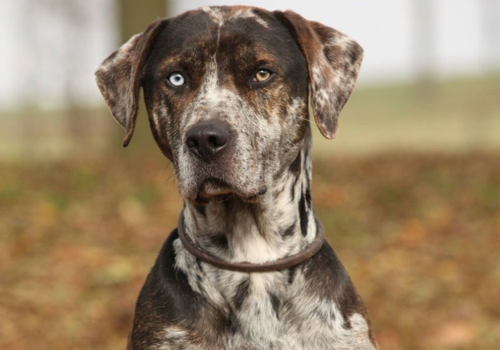In 1539, when the Spanish explorer Hernando de Soto landed in Florida and began his expedition through the Southeastern United States, his scribes noted there was only one species of domestic animal in North America: the Native American’s dog, who looked like a wolf but barked like a dog. These native dogs were crossed with the “bloodhounds, mastiffs, and greyhounds” brought by the Spanish explorers. In Northern Louisiana, the Native Americans called these new dogs “Wolf Dogs.” Once the French arrived with their hounds, they were crossbred again, resulting in today’s Catahoula Leopard Dog.
In 1979, the breed was designated the state dog of Louisiana. The Catahoula was named after a Parish in northeastern Louisiana and after the mottled spots on its coat. At one time this breed was used to round up feral pigs and cattle—livestock that had escaped and was living in woods and swamps. It involved team effort that is highly coordinated and organized, fast-paced, dangerous and a marvel to watch. The ideal dog team usually numbers three, and they must work together.
Otherwise, one pig can kill all three in a matter of minutes. Each dog has to be aware of what the pig and the other two dogs are doing and react accordingly. Hunters sometimes used the Catahoula to trail and tree raccoons, but this dominant breed is more at home acting the thug with obstinate boars. This dog is used particularly on the difficult task of driving and rounding hogs and unruly cattle.










